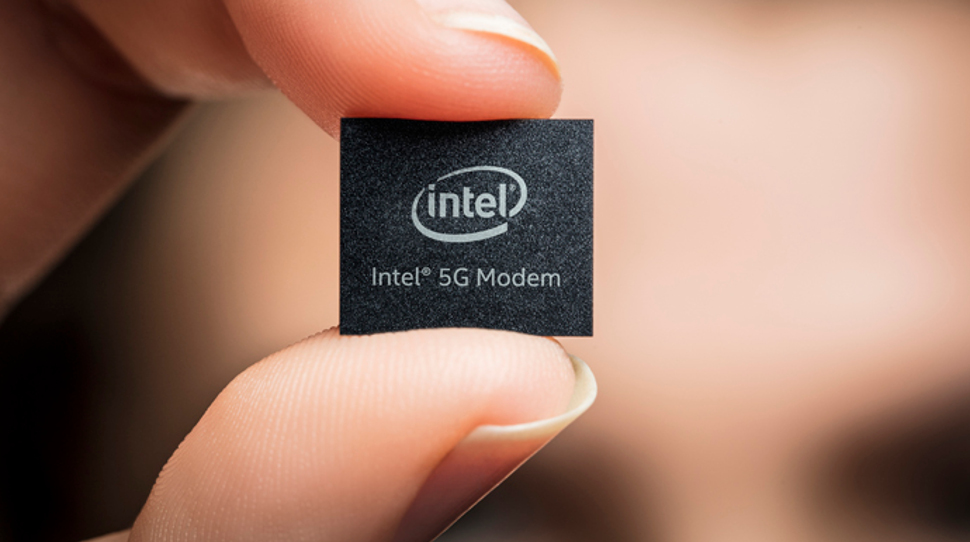5G: The next generation of communications to disrupt and reshape entire industries
The network transformation needed to build the 5G future is currently underway.

NOTE: This piece was originally published in the Intel newsroom blog.
When asked about 5G, people often think faster phones – but 5G is much more than a faster personal device connection. 5G is about intelligence, insights, efficiencies and innovation.
Intel hosted its 5G Summit in Los Angeles on the eve of Mobile World Congress Americas to highlight the progress we have made with our partners on 5G trials this year and to show how we are enabling their 5G solutions using Intel technology. We believe the next generation of communications will disrupt and transform networks and deliver content in newer, faster and more efficient ways. As the executive sponsor of Intel’s global 5G strategy, I am excited about the continued collaboration we have with communications and media industry leaders and the innovations we can develop together.
By 2035, the 5G industry value chain will be worth $2.5 trillion, the “multiplier effect” of 5G will produce $10 trillion of revenue, and the economic impact will be up to 2.2 million jobs in the U.S. alone (or $420 billion in annual U.S. GDP). These benefits will be seen inside and outside of the telecommunications industry.
To prepare networks for 5G, communications service providers are swapping fixed-function hardware for software-defined computing platforms and pushing intelligence to the network edge. This move can lower costs, provide greater network control and automation, and perform the computing where it is needed most. Intel architecture plays a critical role in the network transformation required for 5G deployments by delivering an ideal combination of performance and flexibility to power an intelligent and ubiquitous network.
We have worked with partners, operators and media companies this year to conduct over 25 successful 5G wireless technology trials centered on new standards to drive an accelerated 5G rollout. At our 5G Summit in Los Angeles, we highlighted just a few of the industry leaders utilizing Intel technologies for their 5G solutions.
Radio Access Networks (RAN) are at the Forefront of Innovation
Phil Twist, vice president of marketing at Nokia networks, joined me on-stage to discuss the benefits of Intel’s continued investment in world-class network silicon. Intel-powered high-performance processors are used in Nokia 5G E2E solutions based on Nokia Future X architecture – including Nokia ReefShark chipsets, AirScale radio access and AirFrame cloud solutions. Nokia ReefShark provides high-performance computing, networking and storage capabilities. For instance, reducing the size of some massive MIMO antenna equipment by up to 50 percent and lowering power consumption in some equipment by as much as 64 percent, compared with previous-generation platforms.
Get up to speed with 5G, and discover the latest deals, news, and insight!
Also joining me onstage was Jawad Manssour, Ericsson head of networks portfolio management, Product Area Networks, who articulated Ericsson’s end-to-end 5G strategy. He spoke of how Ericsson integrates Intel technologies to drive innovation across the RAN, network and cloud. Ericsson and Intel have been 5G development partners for almost five years. Our collaboration spans across connected vehicles, device development, network trials and industry initiatives, such as the 5G Innovators Initiative (5GI2), to accelerate the adoption of 5G wireless and infrastructure innovation globally.
The Vision for Media and 5G
Video is the fastest growing type of traffic today – forecasted to grow 45 percent annually through 2023. In five years, 73 percent of all mobile data traffic will be media. This is driven by consumer hunger for streaming videos, increased viewing time and the evolution toward higher-resolution content.2
5G networks’ low latency will fuel the rise of virtual reality (VR) and augmented reality (AR) and other immersive entertainment. Our partners in the media industry are exploring new business models and use cases focused on the delivery of rich, new experiences to engage consumers, such as sports and movie fans.
Warner Bros. Entertainment Chief Technology Officer Vicky Colf joined me onstage to talk about how Intel and Warner Bros. have combined our strengths to develop insights into the opportunities 5G can offer for media distribution, new immersive media and user engagement. Warner Bros. will utilize 5G and mobile edge computing (MEC) technologies running on Intel to deliver new consumer services, such as enhanced location-based entertainment and gaming with multi-access players. With MEC, Warner Bros. can turbocharge the user experience for AR and VR, gaming, and content consumption, literally inventing the future of entertainment with these new technologies and improving efficiency in production processing by using the power of 5G’s high bandwidth and low latency.
Fox Sports and Fox Innovation Labs, along with partners AT&T and Ericsson, delved into a discussion about how the worlds of 5G and media and entertainment will converge for greater efficiencies, more personalized experiences and many new usages. During our media and 5G panel, Fox shared learnings from recent work at golf’s U.S. Open – the world’s first use of 5G for a live commercial golf broadcast. Our discussion highlighted the innovation and collaboration bringing 5G to life, and the way partners are working together to leverage their strengths and expertise in opening the huge opportunity in media. Michael Davies, senior vice president, Technical and Field Operations, Fox Sports, said there are significant cost efficiencies that can be enabled over a 5G network, and his company’s leaders are excited about the convergence of key technologies maturing at the same time: 5G, VR, AR and media.
The Power to Redefine Industries
To sum it up, 5G, visual workloads and a growing number of compelling business and consumer use cases are accelerating investment in networks, applications, infrastructure and devices. With our partners, we have showed that the next generation of communications networks will have the power to redefine entire industries and create new ones. The fundamental network transformation to build the 5G future is happening now.
Sandra Riviera, SVP and General Manager of the Network Platforms Group at Intel
Image Credit: Intel
